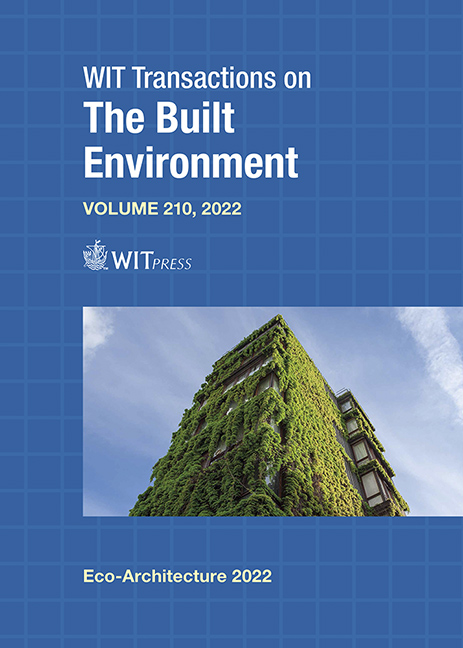BIOMIMICRY APPROACH DESIGN OF PETROL STATIONS WITH INTEGRATING RENEWABLE ENERGY IN THE UAE
Price
Free (open access)
Transaction
Volume
210
Pages
7
Page Range
41 - 47
Published
2022
Paper DOI
10.2495/ARC220041
Copyright
Author(s)
ABEER ABU RAED, ALAA AHMED, AMMAR ABDELHAMID
Abstract
Highway petrol stations are located outside the main cities in the UAE. Connecting these remote petrol stations to power plants requires trenching for poles or underground cables as well as countless hours of work. The integration of PV solar panels and smart materials such as chromogenic glazing into the design and structure reduces the cost and the environmental impact. Even though solar energy is one of the cheapest sources of energy worldwide, it is challenging to achieve a design that reflects the identity of the city. Modern technology makes it difficult for designers and architects to balance themes such as sustainability, formation, and identity. The goal of the research is to explore the potential of using smart technologies to improve performance and to demonstrate, simultaneously, the most suitable design for optimizing energy for highway petrol stations in the UAE. As an example, the national Ghaf tree of the UAE is a cultural and historical symbol of stability and peace that can withstand harsh environment. This study introduces a reference design for the petrol station. A three-dimensional model using Autodesk Revit and an energy model using the Autodesk Insight program is built for the reference case. Several designs for the petrol station with different surface areas, shape, orientation, and window-towall ratio are studied to optimize the energy consumption. Variables such as the location of the oasis, its area, and its services will remain constant. The study concludes that the dynamic characteristics of smart glazing materials can combine not only one objective sustainable design quality, but more than one, including energy efficiency requirements to harmoniously integrate with the surrounding environment
Keywords
energy efficiency, optimized energy, building orientation, UAE





